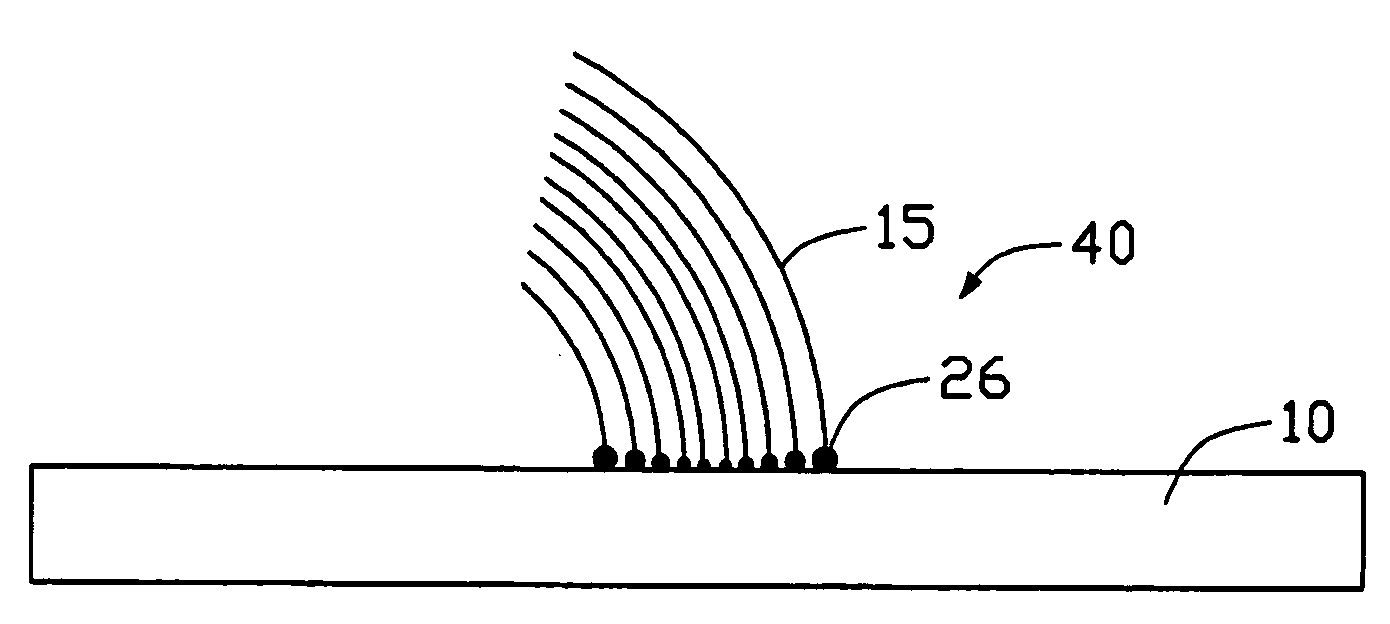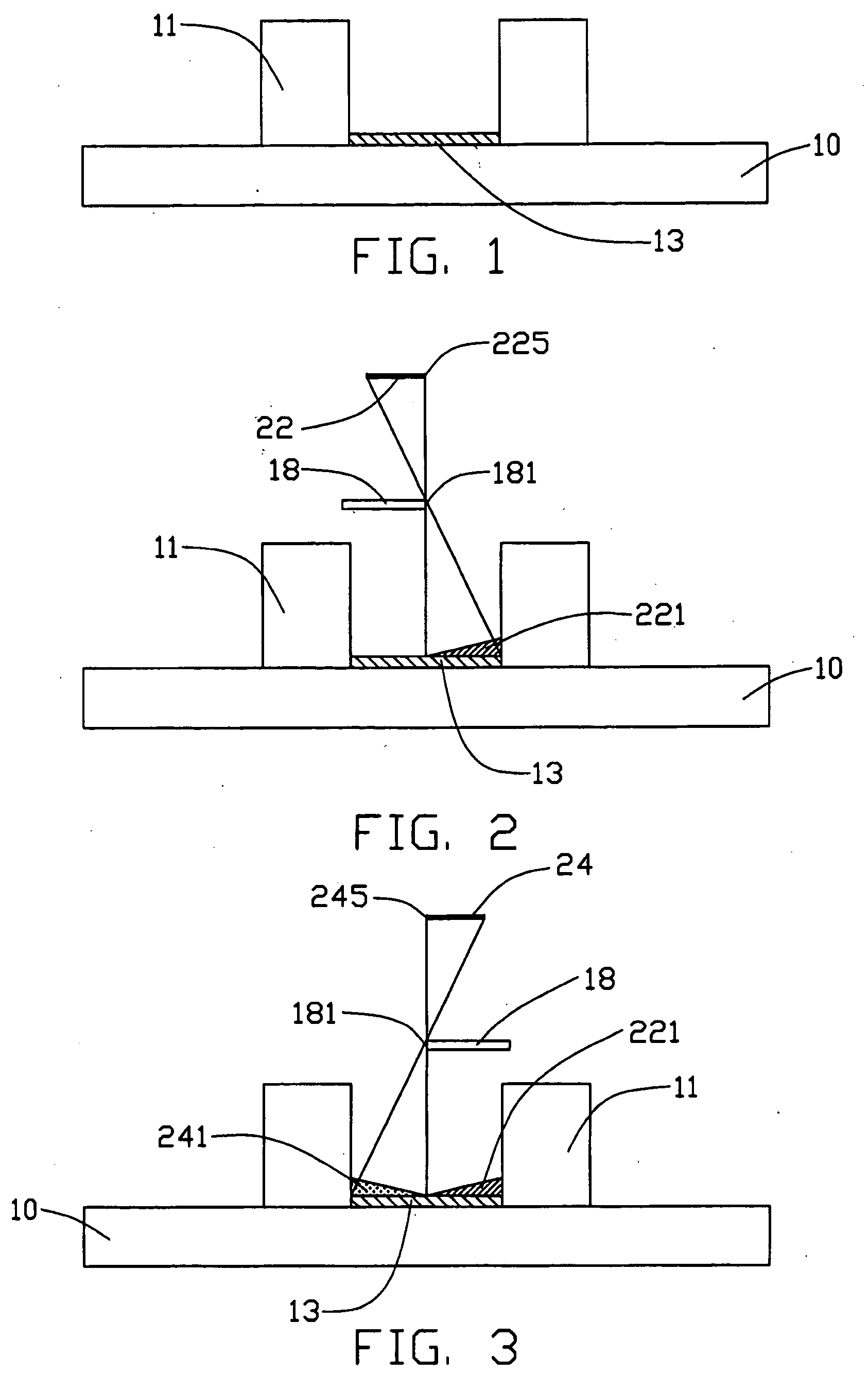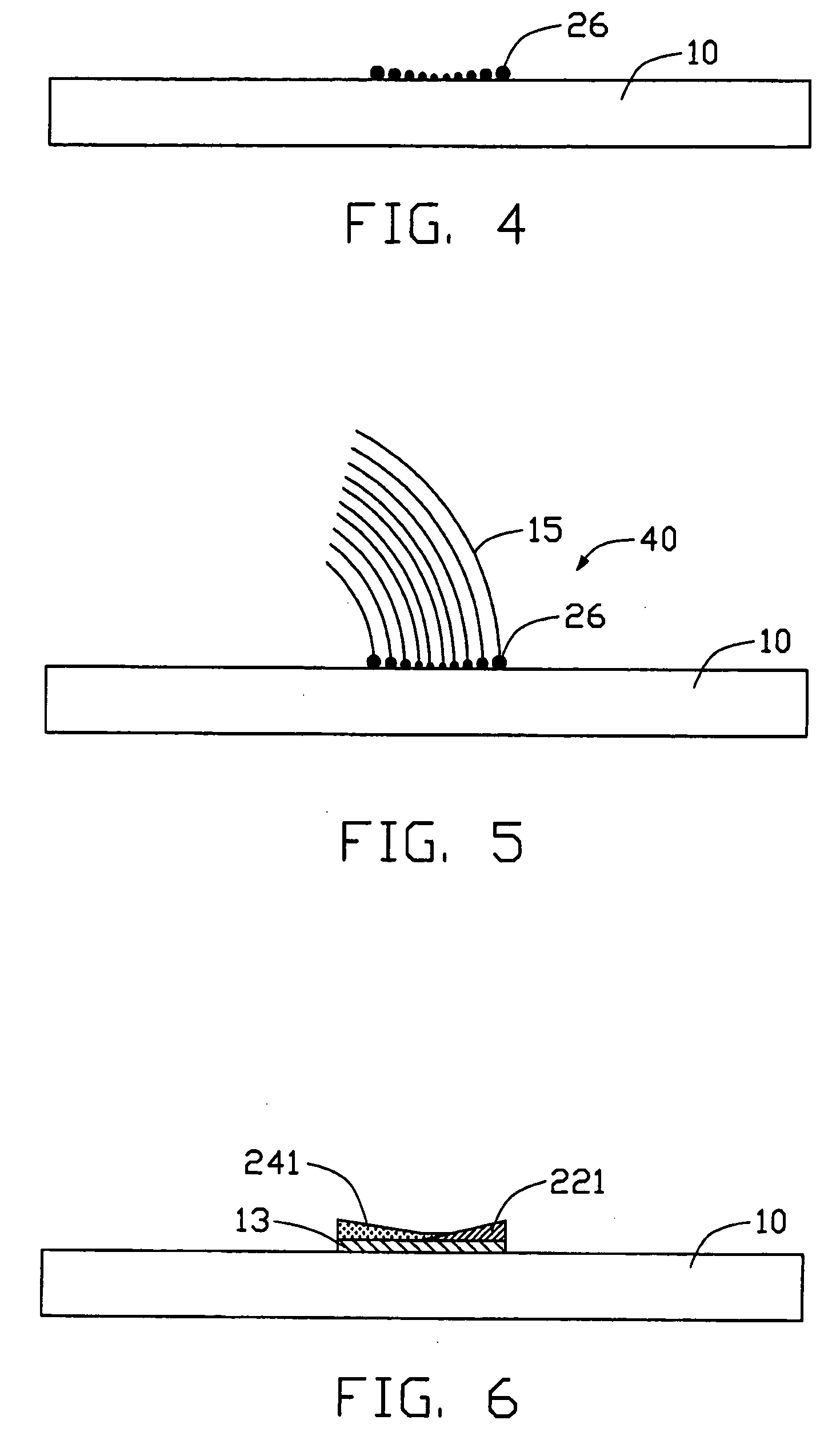Carbon annotate-based device and method for making carbon nanotube based device
a carbon nanotube and annotate technology, applied in the direction of discharge tube/lamp details, nanoinformatics, transportation and packaging, etc., can solve the problem that the idea of using external electric fields to direct the growth of carbon nanotubes is not suitable for building complicated structures
- Summary
- Abstract
- Description
- Claims
- Application Information
AI Technical Summary
Benefits of technology
Problems solved by technology
Method used
Image
Examples
second embodiment
[0035] Referring to the FIG. 6, in the method, the thinner end of the first layer 221 partly underlies the thinner end of the second layer 241. It is allowable for some parts of the first layer 221 and the second layer 241 to overlap; the direction of bending of the aligned carbon nanotube array will not be changed.
third embodiment
[0036] Referring to the FIG. 7, in the method, the two catalyst-doped material layers 221, 241 completely overlap on the catalyst layer 13. FIG. 7 shows the first layer 221 as deposited first on the catalyst layer 13, and the second layer 241 as deposited second. The layers 221, 241 can be deposited by thermal evaporation. Alternatively, the two catalyst-doped material layers 221, 241 may be deposited at the same time. A total thickness of the catalyst-doped material layers 221, 241 and the catalyst layer 13 is essentially uniform the whole length of the catalyst layer 13.
[0037] Referring to the FIGS. 8 and 9, in the third embodiment, the catalyst layer 13 is oxidized and changed into nano-sized catalytic particles (not shown), in similar fashion to the preferred method described above. The treated substrate 10 is then put into a furnace (not shown), and the catalyst-doped material layers 221, 241 melt, forming uniform-sized, alloyed, nano-sized catalytic particles 28. A change in t...
fourth embodiment
[0039] Referring to FIG. 10, the method of the present invention is provided. Many evaporation sources 16 having different catalyst-doped materials are disposed at different positions in order to provide consecutive depositing of various catalyst-doped materials on the catalyst layer 13 by thermal evaporation. Respective speeds of carbon nanotube growth can be controlled by regulating deposition of the different catalyst-doped materials in different areas of the catalyst layer 13, so that a resulting array of aligned carbon nanotubes bends in a predetermined direction.
[0040] It will be apparent to those having ordinary skill in the field of the present invention that an order of depositing the catalyst-doped materials may be altered from that described above without effecting the reasultant annotate array 15. It will also be apparent to those having ordinary skill in the field of the present invention that if the time order rather than the position order of deposition of the catalys...
PUM
| Property | Measurement | Unit |
|---|---|---|
| thickness | aaaaa | aaaaa |
| thickness | aaaaa | aaaaa |
| temperature | aaaaa | aaaaa |
Abstract
Description
Claims
Application Information
 Login to View More
Login to View More - R&D
- Intellectual Property
- Life Sciences
- Materials
- Tech Scout
- Unparalleled Data Quality
- Higher Quality Content
- 60% Fewer Hallucinations
Browse by: Latest US Patents, China's latest patents, Technical Efficacy Thesaurus, Application Domain, Technology Topic, Popular Technical Reports.
© 2025 PatSnap. All rights reserved.Legal|Privacy policy|Modern Slavery Act Transparency Statement|Sitemap|About US| Contact US: help@patsnap.com



